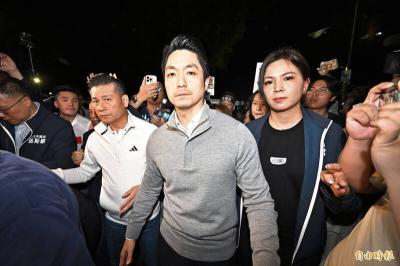Minister of National Defense Yen De-fa (嚴德發) yesterday confirmed that Taiwan has requested a purchase of M109A6 Paladin self-propelled howitzers from the US, in a bid to beef up its defense capabilities.
During a hearing of the legislature’s Foreign Affairs and National Defense Committee, Yen said that the Paladin has the specifications, such as a quick reload and big firepower, to meet Taiwan’s territorial defense needs.
However, Yen did not disclose how many of the self-propelled M109A6 howitzers Taiwan was hoping to buy from the US.
The deal was first reported by Chinese-language media in July.
Reports said that Taiwan was planning to buy 100 howitzers, but the Ministry of Defense did not confirm the reports.
In response to legislators’ questions, Republic of China Army Chief of Staff Yang Hai-ming (楊海明) said that the army’s rangefinder and positioning systems are partly digitized and that equipment could be upgraded to maximize the capabilities of the Paladin artillery.
Taiwan’s army units have M109A5, M109A2, M114 and M110A2 howitzers in their inventories, with the M109A5 being the newest.
The army ordered the M109A5s in 1996, the year of the Third Taiwan Strait Crisis, and took delivery of them in 1998.
Compared with the M109A5, the Paladin is superior with regards to reliability, availability, maintainability, armament and survivability, said a military source, who asked to remain anonymous.
The Paladin can fire a round within 60 seconds while on the move, and its “shoot and scoot” capability enables it to avoid counter-battery fire, the source said, adding that it it has a range of 30km using assisted rounds.
Yen’s confirmation of the plan to buy the Paladin howitzers follows the US’ approval of two arms packages to Taiwan in the past two months, which include 108 M1A2T Abrams tanks and 66 F-16 Block 70/72 jets.

Several Chinese Nationalist Party (KMT) officials including Chairman Eric Chu (朱立倫) are to be summoned for questioning and then transferred to prosecutors for holding an illegal assembly in Taipei last night, the Taipei Police said today. Chu and two others hosted an illegal assembly and are to be requested to explain their actions, the Taipei City Police Department's Zhongzheng (中正) First Precinct said, referring to a protest held after Huang Lu Chin-ju (黃呂錦茹), KMT Taipei's chapter director, and several other KMT staffers were questioned for alleged signature forgery in recall petitions against Democratic Progressive Party (DPP) legislators. Taipei prosecutors had filed

Taiwan would welcome the return of Honduras as a diplomatic ally if its next president decides to make such a move, Minister of Foreign Affairs Lin Chia-lung (林佳龍) said yesterday. “Of course, we would welcome Honduras if they want to restore diplomatic ties with Taiwan after their elections,” Lin said at a meeting of the legislature’s Foreign Affairs and National Defense Committee, when asked to comment on statements made by two of the three Honduran presidential candidates during the presidential campaign in the Central American country. Taiwan is paying close attention to the region as a whole in the wake of a

NEW WORLD: Taiwan is pursuing innovative approaches to international relations through economics, trade and values-based diplomacy, the foreign minister said Taiwan would implement a “three-chain strategy” that promotes democratic values in response to US tariffs, Minister of Foreign Affairs Lin Chia-lung (林佳龍) said. Taiwan would aim to create a “global democratic value chain,” seek to capitalize on its position within the first island chain and promote a “non-red supply chain,” Lin was quoted as saying in the ministry’s written report to the Legislative Yuan submitted ahead of the legislature’s Foreign Affairs and National Defense Committee meeting slated for today. The Ministry would also uphold a spirit of mutual beneficial collaboration, maintaining close communication and consultations with Washington to show that Taiwan-US cooperation

Taiwan and the US have begun trade negotiations over tariffs imposed by US President Donald Trump earlier this month, Minister of Foreign Affairs Lin Chia-lung (林佳龍) said in an interview this morning before reporting to the Legislative Yuan’s Foreign Affairs and National Defense Committee. The Taipei Economic and Cultural Representative Office (TECRO), Taiwan’s de facto embassy in the US, has already established communication channels with the US Department of State and the US Trade Representative (USTR), and is engaging in intensive consultations, he said. Points of negotiation include tariffs, non-tariff trade barriers and issues related to investment, procurement and export controls, he